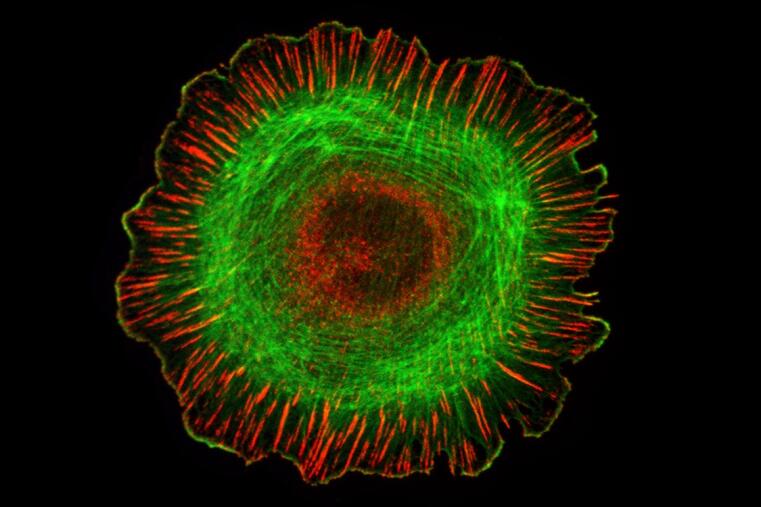
PROJECT A12
Integrin Subtype-specific Organization and Force Transduction
Integrins are ubiquitously expressed cell surface receptors, which upon contact with extracellular ligands induce the assembly of macromolecular adhesion structures at the plasma membrane. In mammals, the integrin family comprises 24 different receptor subtypes with overlapping but also important non-redundant functions that modulate cell adhesion and mechano-chemical signaling. A distinguishing feature of integrin receptors is their unique cytoplasmic tail domains, but it is still unclear how they mediate integrin subtype specificity. In particular, it is unknown how different integrin receptor subtypes assemble on the nanoscale level, and quantitative information on how mechanical forces are transduced by distinct integrin tail domains is missing. In this CRC project, we will generate genetically modified cells to analyze the role of different cytoplasmic tail domains systematically. We will use a recently developed super-resolution approach to determine the nanoscopic organization underlying integrin-based cell adhesions, and we will adopt our established FRET-based tension sensor measurements to investigate the molecular details of integrin force transduction. These experiments will be complemented by mass spectrometry to identify interaction partners at the cytoplasmic integrin tail domain that govern receptor subtype specificity. Together, our experiments should provide novel insights into the role of distinct integrin receptor subunits and contribute to a better understanding of cell type specific regulation of cell adhesion signaling.


